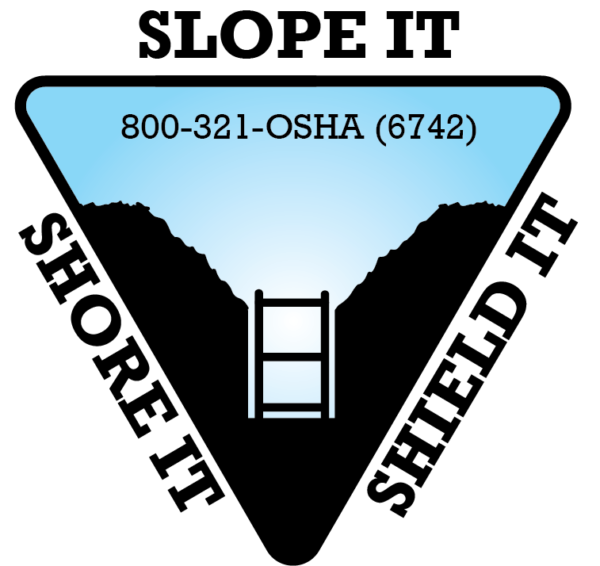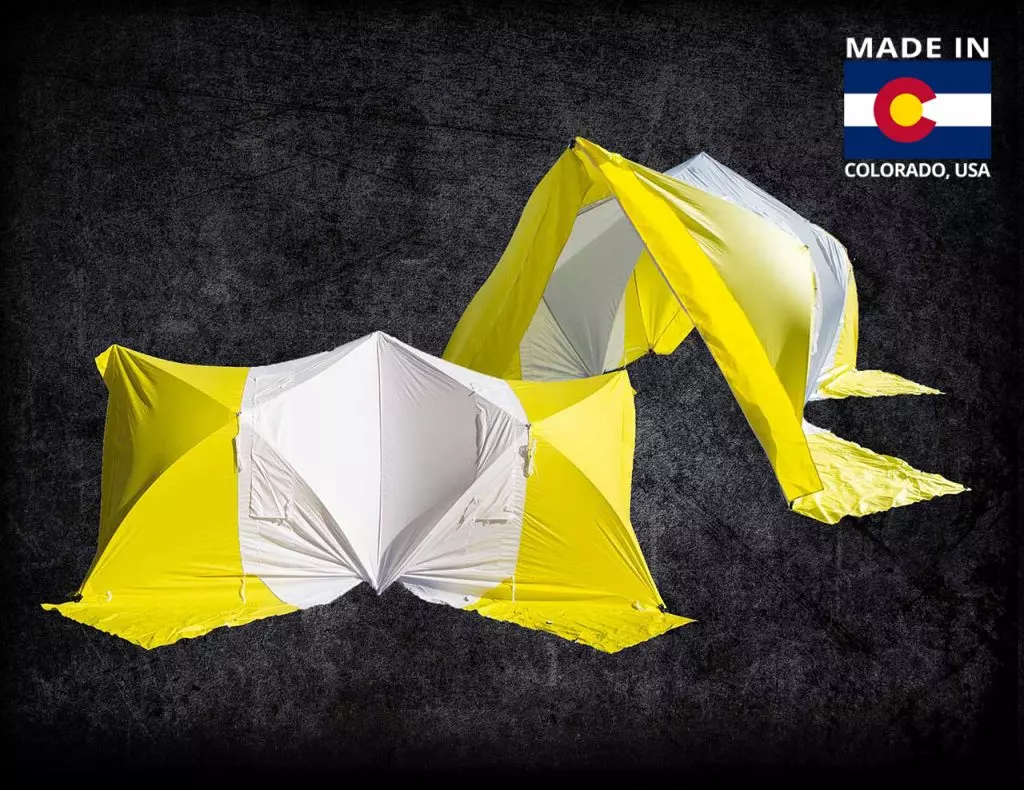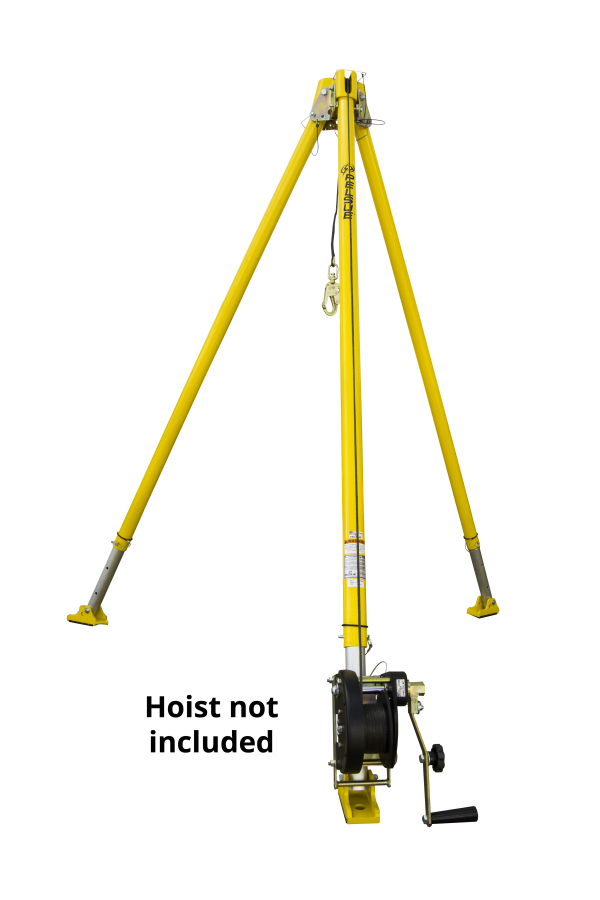Excavation and Trench Safety: Protection Goes Underground
April 22, 2020
What measures 1 cubic yard but can weigh up to 3,000 pounds?
If you answered “soil,” you can see why trench and excavation operations can be so dangerous. According to OSHA data, the fatality rate during excavation work is 112% higher than during general construction.
As we near May and the kick-off (in earnest) of both outdoor work and severe weather season, we want to take some time to look at potential hazards your crew might encounter during trenching and excavation operations and some ways you can better protect yourself and your team.
First, Some Definitions
An excavation is defined by OSHA as “any man-made cut, cavity, trench, or depression in the earth’s surface formed by earth removal.”
A trench is further defined as a narrow excavation, with the depth exceeding the width (measured from the bottom of the trench). In other words, all trenches are excavations, but not all excavations are trenches.
Since many of the same hazards exist in both operations, we’ll focus on the particular hazards of trenching, as the things learned there can also apply to excavations.
Hazards and Precautions
Cave-ins are, by far, the leading cause of death in trenching operations. The public imagination associates the threat of collapses and cave-ins with underground operations such as mining. People don’t often think of collapse as a danger when workers are under the open sky.
The walls of a trench can collapse in fractions of a second. As mentioned above, saturated soil can weigh over 3,000 pounds per cubic yard—about the same as a four-door sedan. Even loose, dry soil weighs an average of 2,050 pounds per cubic yard. That much weight moving that quickly is a recipe for disaster.

Start With Prevention
Preventing trench cave-ins starts with designating what OSHA calls a “competent person” on your job site. A competent person is qualified and trained to identify existing and predictable hazards, report on them, and take action to correct them. The tasks a competent person might perform during excavation might include classifying soil, inspecting protective systems, monitoring water removal equipment, and conducting site inspections.
No amount of trenching experience or practice is a substitute for thorough planning. Each patch of soil is different, and local weather patterns have a major impact on day-to-day soil conditions. Having a competent person inspecting the soil helps you prepare and adapt for better trench safety.
Stable rock is the safest type of soil. OSHA defines it as natural, solid mineral material that can be excavated with vertical sides and remain intact while exposed. The other three categories of soil go from Type A to Type C in order from most to least stable. Being able to correctly identify soil type on site is vital to protecting your workers.

If a trench is 5 or more feet deep (4 feet or more in Canada), some sort of protective system is required to be in place to provide better trench safety. The three systems OSHA recommends are sloping, supporting, and/or shielding.
Sloping the sides of an excavation makes the trench more stable. The length of the wall should be at least 1.5 times the depth of the trench, to a maximum depth of 20 feet. A slope of this gradation is safe for any type of soil. Benching is similar to sloping, but the walls of the trench have steps cut into them. At depths greater than 20 feet, a registered engineer is required to approve sloping and benching plans.
Supporting or shoring uses wales, cross braces, and uprights to help prevent the cave-in of loose or wet soil. These supports must be installed from the top down and removed from the bottom up.
Shielding involves the use of trench boxes which are placed in a trench to prevent the walls from caving in. Some of these boxes can be moved along the trench as the work progresses. However, workers are only protected when they are within the walls of the box.
Another important precaution before excavation starts is the identification and labeling of any and all utility lines in the vicinity of your job site. Hitting utility lines can lead to electrocution, sudden flooding, or exposure to hazardous gases.
A trench is a confined space, and like many other confined spaces, there is a risk toxic gases or particles may be present. Before entering a trench, it is important to use a gas monitor to make sure the atmosphere is safe.
Provide Means of Quick Entry and Exit
Since a trench is a confined space, it’s important to provide workers with reliable means on entrance and exit in case of an emergency. Ladders must be placed on stable ground that is free of excess moisture. It is also recommended that a secondary ladder is installed at the other end of the trench and that workers clearly communicate when they are entering or exiting the trench.
OSHA also requires fall protection systems to be in place when working in or around trenches four feet deep or greater. Signs and barriers help prevent workers getting too close to the open trench, and having retrieval systems on-site ensures that if a fall does occur, the downed worker can be rescued quickly. For more on fall protection and trench safety, please see our recent post on the subject.

Other Concerns to Think About Trench Safety
Similarly, it’s important to protect workers in trenches from falling or dropped objects. Maintaining a two-foot clearance from the edge of excavations help prevent accidents which can be fatal. This policy holds true for both small tools and heavy machinery.
Lastly, the weather has a major impact on the conditions and stability of the trench. Sudden precipitation can saturate soil making the walls unstable and causing workers to become stuck in mud if they need to escape. Trench safety will also be effected by freezing and thawing cycles.
On the other end of the spectrum, all outdoor workers are at risk of heat stress, especially in summer. We touched on the dangers of hard work in high heat in a previous post, and it is very useful to keep those dangers in mind as summer begins.
To keep workers safe, protect trenches from sudden rain, and help reduce the amount of pumping you may need to do after a storm, consider deploying one of our Trench Series Work Tents on the job. These tents are specially designed for trench work and can interlock to cover the length of the trench if need be.
Pelsue has been dedicated to your safety for over half a century. From all of us here, we hope you have a productive and healthy start to spring!

